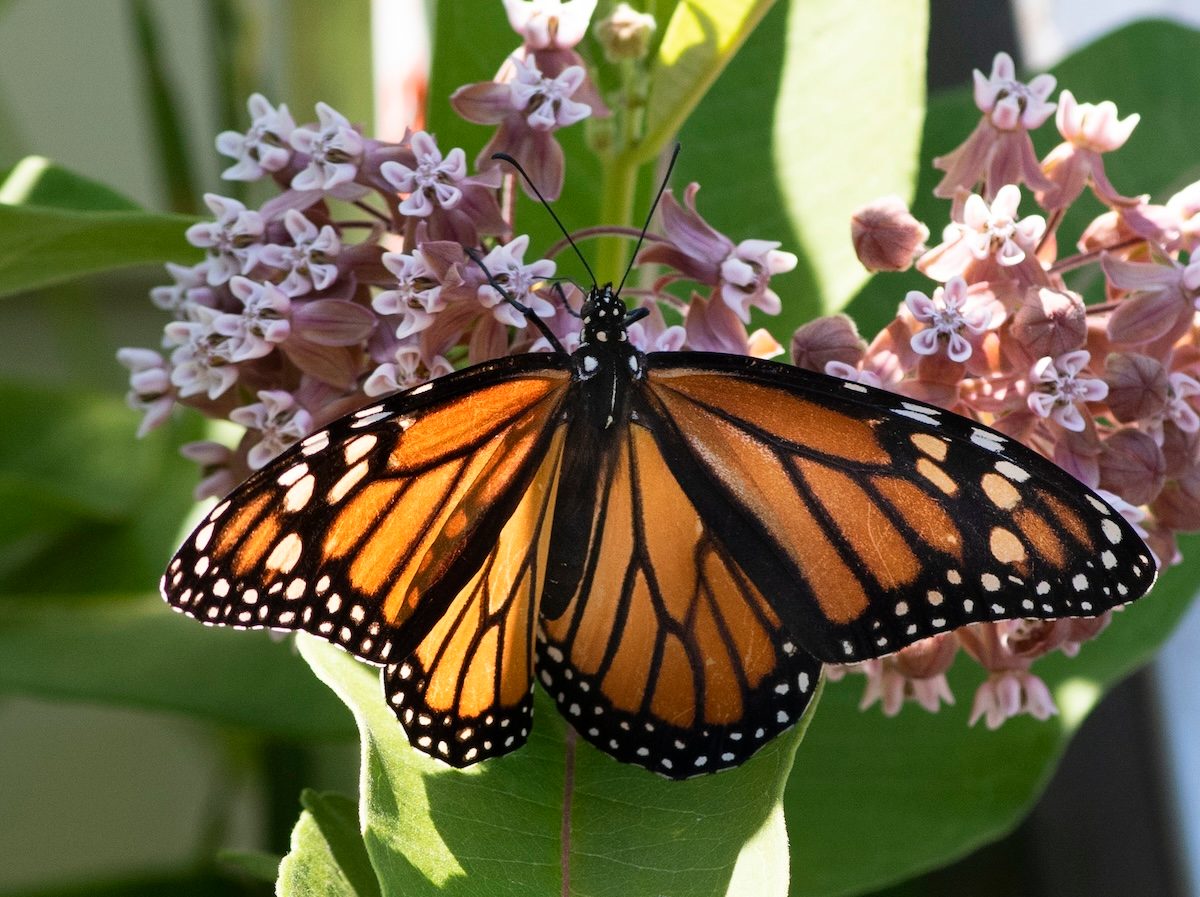Are monarch butterflies endangered? Monarch population numbers are falling and it's clear that these butterflies need our help.

Monarch Butterfly Numbers Are Declining—But You Can Help

On This Page
Monarch Butterfly Population Status
Monarchs are among the most recognizable and best loved butterflies in North America, but you might have noticed fewer of them over the last few years. Given the less frequent sightings, you might’ve wondered: are monarch butterflies endangered, and what can gardeners do to help them?
Are Monarch Butterflies Endangered?

The answer is both yes and no.
To help the monarch receive protection under the Endangered Species Act, the U.S. Fish and Wildlife Service is accepting comments from the public about its proposal to list the species as threatened until March 12, 2025. To submit a comment, go to the proposal’s page on regulations.gov.
Migratory monarch butterflies entered the International Union of Conservation of Nature’s Red List of Threatened Species as endangered in 2021. However, in late 2023, the butterfly’s status was reassessed and listed instead as vulnerable. This change in terminology came not from an increase in monarch numbers, but from a shift in the data used to assign classifications.
What Percent of Monarch Butterflies Are Left?

With that said, not yet having a spot on the endangered species list doesn’t mean these butterflies aren’t in trouble. The eastern population of monarchs has decreased by 90% since the 1980s. Western populations have decreased by 99% in that same timeframe.
Discover what monarch caterpillars look like, as well as three butterflies that look like monarchs.
Why Are Monarch Numbers Decreasing?

It’s important to note that decreasing monarch population numbers are the result of a variety of factors. Mary Phillips, head of Garden for Wildlife from the National Wildlife Federation, says, “Monarchs are threatened with widespread habitat loss, increased use of pesticides (and herbicides) to control insects and weeds, and natural enemies such as predators, parasitoids, and diseases. A changing climate is making some habitat less suitable and forcing changes in migratory patterns.”
Mary further explains that milkweed, the only host plant on which monarchs lay their eggs, used to grow abundantly across the United States. A decrease in milkweed means a decrease in monarch habitat, which means a decrease in monarchs.
What Can Gardeners Do to Help Monarchs?

For many backyard gardeners, helping these beautiful butterflies starts with one word: milkweed. “The best way to help monarchs is restoring their natural habitat by planting native milkweeds and nectar plants, eliminating pesticides and encouraging others to adopt these practices,” Mary says. Choosing natural, non-insecticide or herbicide solutions for weeds and pests go a long way in sustaining the beloved monarch, too.
All monarchs start their lives on milkweed; it’s the only host plant on which adults lay their eggs and caterpillars happily munch. Consider planting one of the many native varieties of milkweed in your pollinator garden. Avoid tropical milkweed, however. It’s a non-native plant, and it can negatively affect monarch migration patterns.
Support adult monarchs on their long migration journey south by growing nectar-rich flowers that bloom from late summer into fall. Try goldenrod, asters and coreopsis. “Adult monarchs feed on the nectar of many flowers, but they breed only where milkweeds are found,” Mary says.
More Ways to Help the Monarch Population Recover

- Encourage local leaders to join the Mayors’ Monarch Pledge.
- Engage in community conservation actions such as native habitat restoration, education and outreach and local policy changes to benefit monarch butterflies.
- Enroll in monarch conservation, community-based science opportunities in local communities.
- Reduce or eliminate the use of pesticides.
- Create an outdoor space using native plants that attract monarchs and other pollinators. Once you’ve incorporated all the elements of a wildlife-friendly habitat—food, water, cover, and places to raise young—be recognized by certifying your space through Garden for Wildlife’s signature Certified Wildlife Habitat program. Every $20 application fee helps further protect and restore key habitat for pollinators and other wildlife. Every certified garden also counts toward meeting the goals of the Million Pollinator Garden Challenge.
- Butterfly Heroes is an initiative that connects gardeners and kids and families alike to help monarch butterflies and other pollinators. By taking a pledge to be a Butterfly Hero, pledgers are committing to create new habitat for monarchs.
- It is not imperative to report every monarch in your garden. However, many gardeners like to keep their own records and track how many monarchs they see from one year to another. For reporting, the Western Monarch Thanksgiving Count is the oldest and best. The Xerces Society has been cataloging the rapid decline of monarchs. It’s important to follow their guidelines and suggestions for the count.
About the Expert
Mary Phillips is Head of Native Plant Habitat Strategy & Certification programs at the National Wildlife Federation. As leader of NWF’s Garden for Wildlife programs, Mary advocates for gardeners to include native plants in their landscapes. She collaborates with conservationists, entomologists, federal agencies and more to make native plants accessible for all.




















